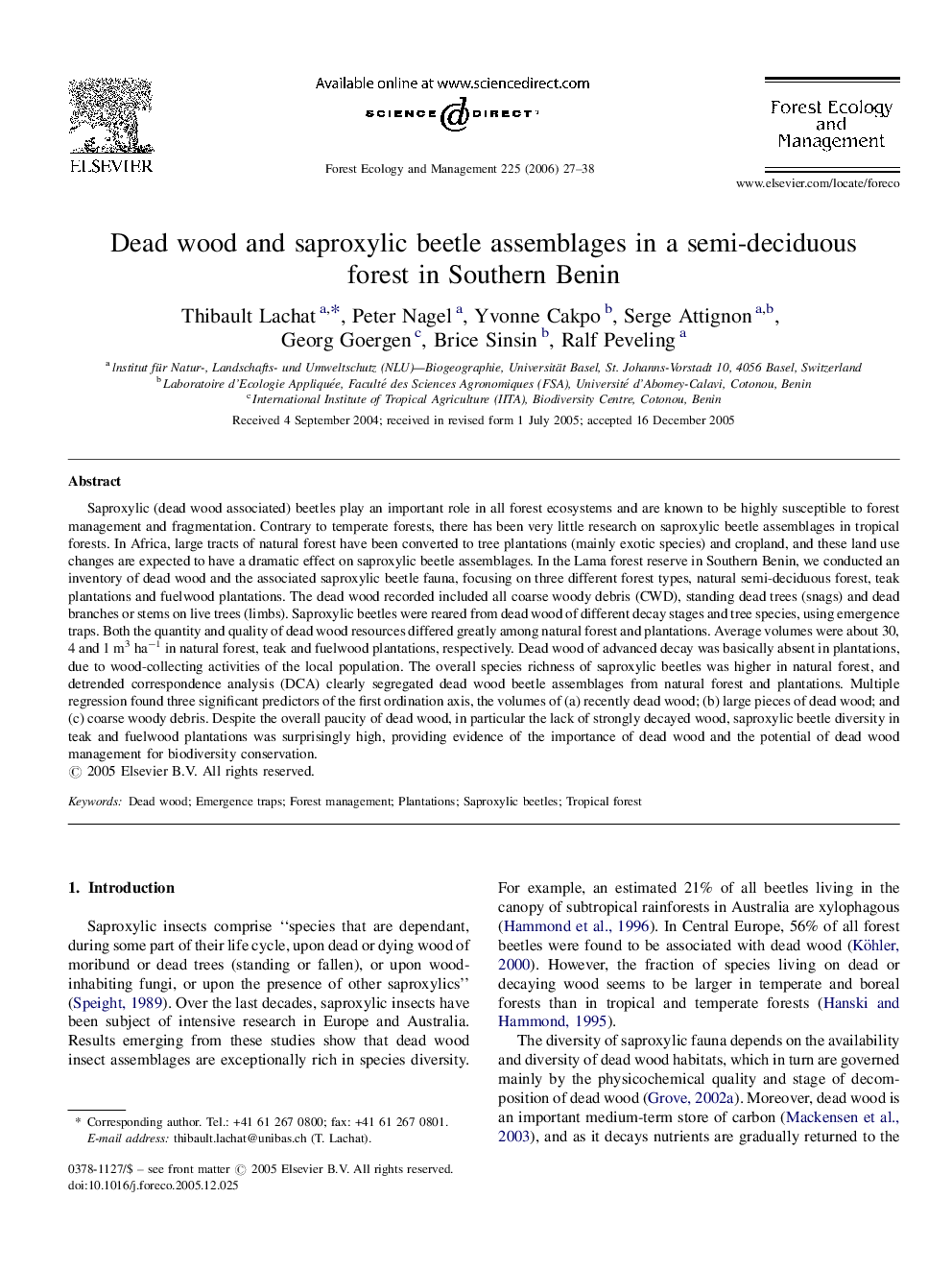| کد مقاله | کد نشریه | سال انتشار | مقاله انگلیسی | نسخه تمام متن |
|---|---|---|---|---|
| 91002 | 159424 | 2006 | 12 صفحه PDF | دانلود رایگان |

Saproxylic (dead wood associated) beetles play an important role in all forest ecosystems and are known to be highly susceptible to forest management and fragmentation. Contrary to temperate forests, there has been very little research on saproxylic beetle assemblages in tropical forests. In Africa, large tracts of natural forest have been converted to tree plantations (mainly exotic species) and cropland, and these land use changes are expected to have a dramatic effect on saproxylic beetle assemblages. In the Lama forest reserve in Southern Benin, we conducted an inventory of dead wood and the associated saproxylic beetle fauna, focusing on three different forest types, natural semi-deciduous forest, teak plantations and fuelwood plantations. The dead wood recorded included all coarse woody debris (CWD), standing dead trees (snags) and dead branches or stems on live trees (limbs). Saproxylic beetles were reared from dead wood of different decay stages and tree species, using emergence traps. Both the quantity and quality of dead wood resources differed greatly among natural forest and plantations. Average volumes were about 30, 4 and 1 m3 ha−1 in natural forest, teak and fuelwood plantations, respectively. Dead wood of advanced decay was basically absent in plantations, due to wood-collecting activities of the local population. The overall species richness of saproxylic beetles was higher in natural forest, and detrended correspondence analysis (DCA) clearly segregated dead wood beetle assemblages from natural forest and plantations. Multiple regression found three significant predictors of the first ordination axis, the volumes of (a) recently dead wood; (b) large pieces of dead wood; and (c) coarse woody debris. Despite the overall paucity of dead wood, in particular the lack of strongly decayed wood, saproxylic beetle diversity in teak and fuelwood plantations was surprisingly high, providing evidence of the importance of dead wood and the potential of dead wood management for biodiversity conservation.
Journal: Forest Ecology and Management - Volume 225, Issues 1–3, 15 April 2006, Pages 27–38